It’s time to stop thinking about ecological restoration as mitigation for a negative environmental footprint. It is so much more.
In the International Living Future Foundation’s publication Trim Tab, my colleague, Pete Munoz, wrote that the concept of a “handprint,” a positive, intentional change with infinite ability to ripple outward, is a much more fitting analogy for the work that we do. In citing real-life examples of “handprint projects,” Pete referenced the restoration of Tinker’s Creek, a degraded, urban stream that flows through the grounds of Hudson High School in Hudson, Ohio.
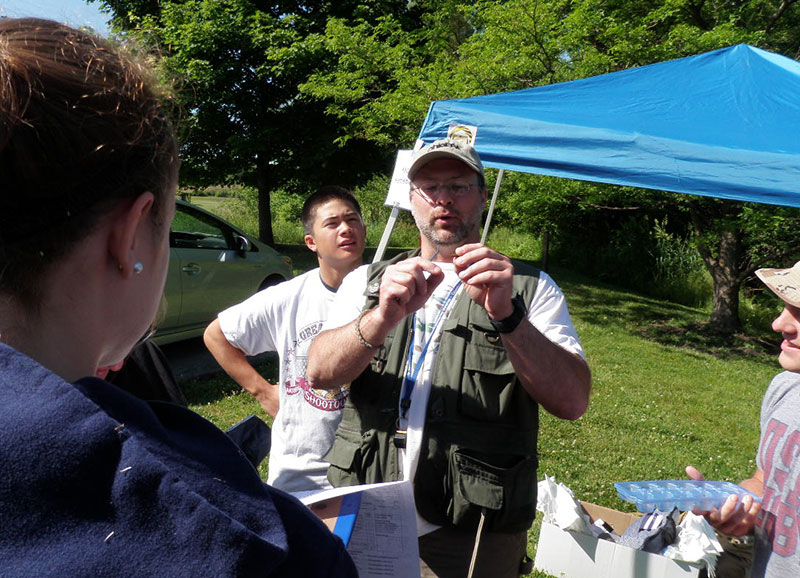
Hudson High School students learn how to identify macroinvertebrates and monitor the quality of Tinker’s Creek
The brainchild of two Hudson High science teachers, the Tinker’s Creek restoration project engaged students at every phase. Before work even began, the teachers dubbed the site the “Land Lab” and started a blog to share news about its creation. Over the next year, Hudson High students helped assess the site and design, plant, and monitor the restored stream. In the process, they learned how to identify macroinvertebrates, participate in a design charrette, document physical changes to an ecosystem, and explain to other people why it is important to think about what happens to every drop of rain that falls on a community, and the connection between a place and the health of its watershed.
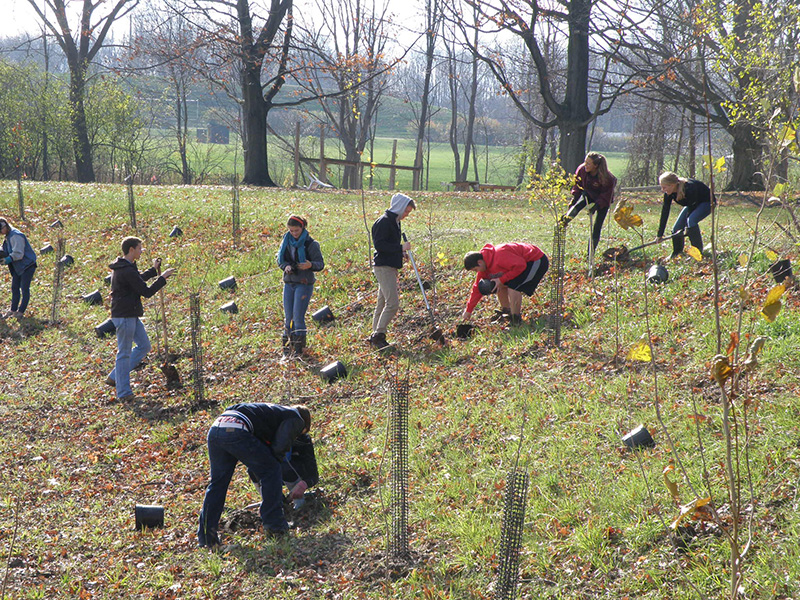
Hudson High School students planting and protecting riparian vegetation in the Land Lab
As Biohabitats’ project manager for the restoration, I can honestly say that my role was as focused on education as it was on engineering. This project is reconnecting much more than a stream to its floodplain. It is rekindling in these teenagers a sense of wonder about the natural world, renewing in them a visceral link to place, reminding them of simpler ways of working together and communicating, and sowing in them seeds of environmental curiosity, knowledge, and stewardship. The students who engaged in that project seven years ago have long since graduated, but the Land Lab remains an active part of the school’s educational experience. And this is not just a win for the school and its students, but for science.
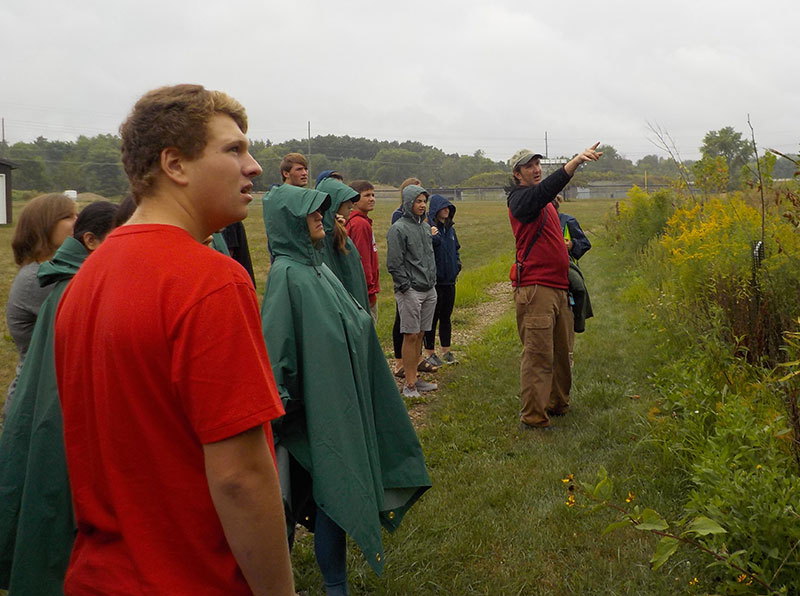
The Land Lab at Hudson High School is open rain or shine. Students learn about native plants
The Land Lab has also inspired the creation of other Land Labs in Ohio.
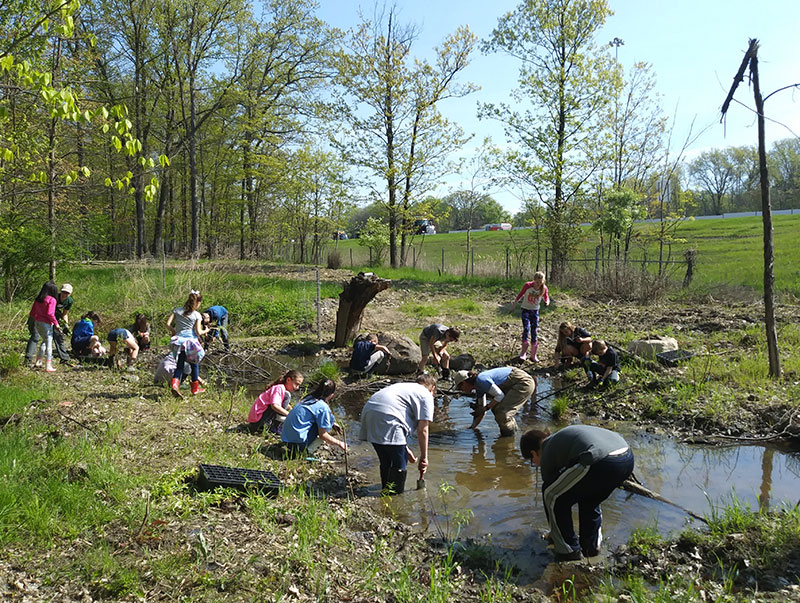
Students in the Land Lab t the Willoughby-Eastlake School of Innovation
One of them is at a STEM-based school in Willoughby Hills, Ohio. Working with the faculty and administration at the Willoughby-Eastlake School of Innovation, we integrated every phase of the restoration of the East Branch of Euclid Creek—which flowed near the school–into the curriculum. Students even got to build models of their “restored” stream. Together, we created a stream system that will not only provide ecological services, but hands-on learning opportunities into the future.
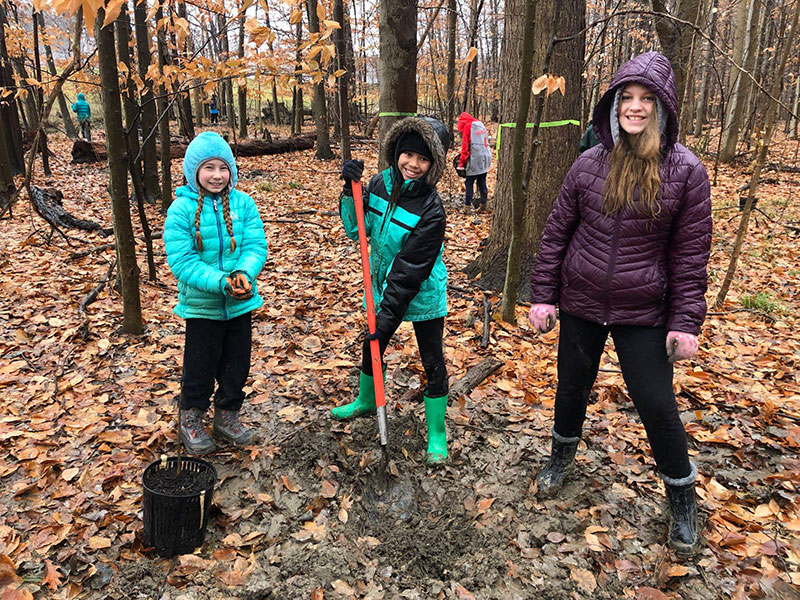
Willoughby-Eastlake students planting trees
At the School of Innovation, fourth graders not only know what the word “bioengineering” means, they know how to do it. Earlier this year, they planted 600 live stakes and 200 trees to help stabilize the streambanks. And just this past Thursday they planted an additional 800 plugs in several newly created wetlands. Their contributions to the restoration even made it into the local news. Now that’s a ripple effect.
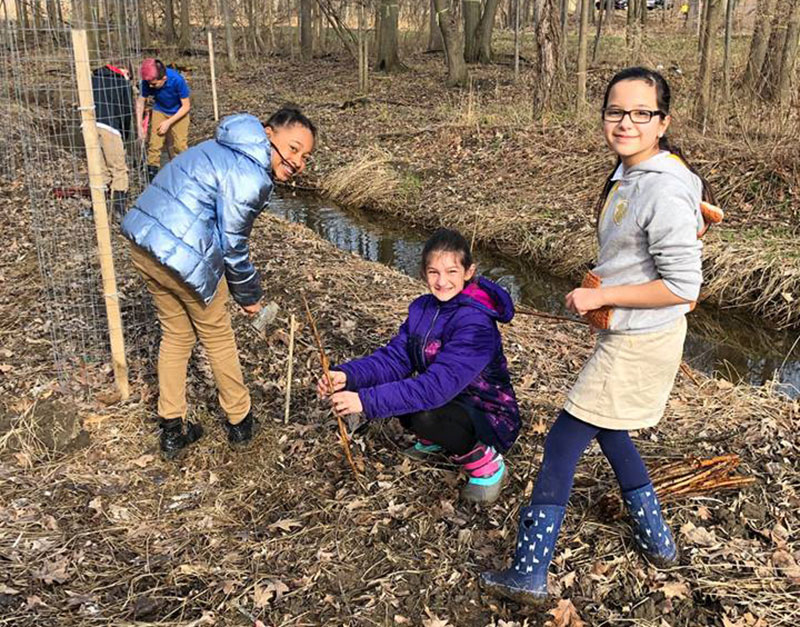
Fourth graders learning about and planting live stakes along the restored East Branch of Euclid Creek
Last week, I was reminded that with ecological restoration, things can get even ripplier.
Two years ago, I led the final phase of a multi-year restoration project along Kelsey Creek in Cuyahoga Falls, Ohio. The restored stream flows through a public park, and near two schools: Cuyahoga Falls High School and a public charter school called the Schnee Learning Center, which provides a second chance for students who wish to earn a diploma but have experienced problems in a regular school setting. As with the project in Hudson, the schools were very much a part of the Kelsey Creek restoration. Students from both schools, as well as the Cleveland Montessori School located in our office building, helped lead the planting efforts and participated in classroom presentations while the projects were being designed. Over the last school year, 9th grade science students from Cuyahoga Falls High School, had raised trout (from alevin to fry) as part of Trout Unlimited’s Trout in the Classroom program. The program is designed to teach students about ecology, habitat, and water quality, and instill in them a conservation ethic and an appreciation for water resources. A little over a week ago, I was fortunate enough to join the students in releasing those fish into the Cuyahoga River, just a few miles upstream of where Kelsey Creek flows into it.
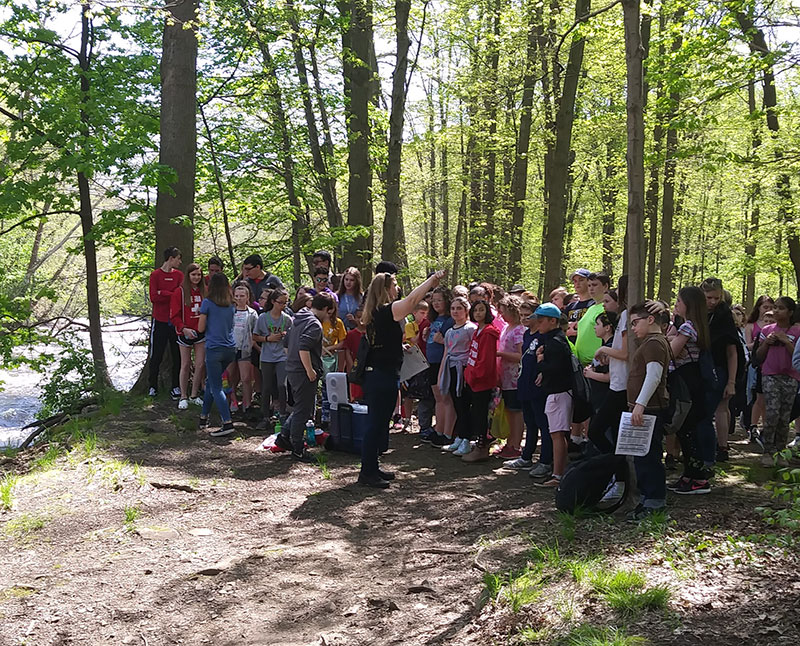
9th graders preparing to release trout into the Cuyahoga River
Although rainbow trout are not native to Ohio, they need clean, cold streams that are rich in dissolved oxygen and covered by forest vegetation. As I stood by the Cuyahoga that day, watching the Trout Unlimited members release the fry, it is hard to say what was more thrilling: seeing phoneless teenagers getting dirty and genuinely engaging with the river, or knowing that the restoration of Kelsey Creek might make life a little better for those trout.
These kinds of ripples are happening everywhere. A month ago, my colleagues in Biohabitats’ Chesapeake/Delaware Bays Bioregion helped a large group of high school students from Columbia, Maryland plant trees in the riparian zone of a newly restored stream near a popular shopping mall. If just one of those kids walks down to streambank to check on just one of those trees on his way to catch a movie at the mall, I’d consider it a win.
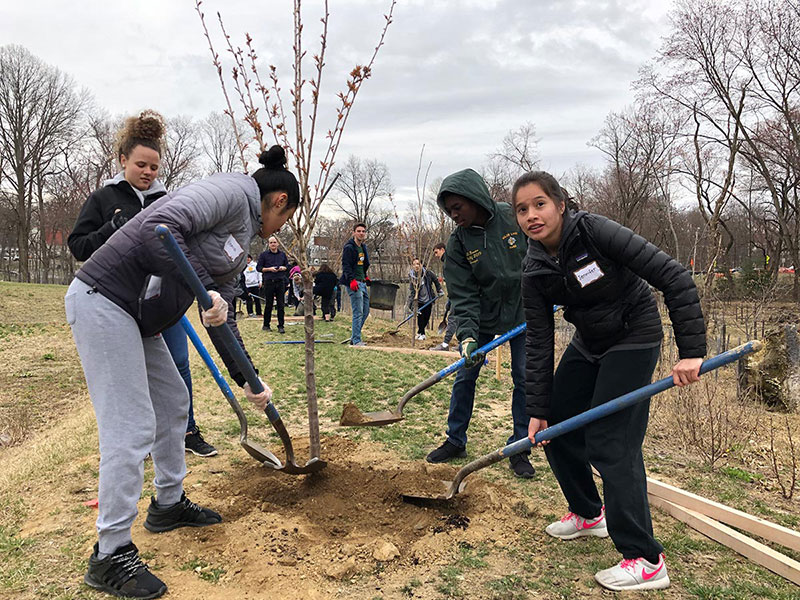
High school students plant trees along a restored stream in Columbia, Maryland
Last year, students from the Dorchester Career and Tech Center school came out to help Biohabitats plant riparian trees, shrubs, and grasses along a restored creek in Cambridge, Maryland. The creek, which had been piped and buried for years, flows directly into the Choptank River, a major tributary of the Chesapeake Bay. The daylighted creek is now part of a public park, and the students who helped restore it last year have taken their involvement to a new level.
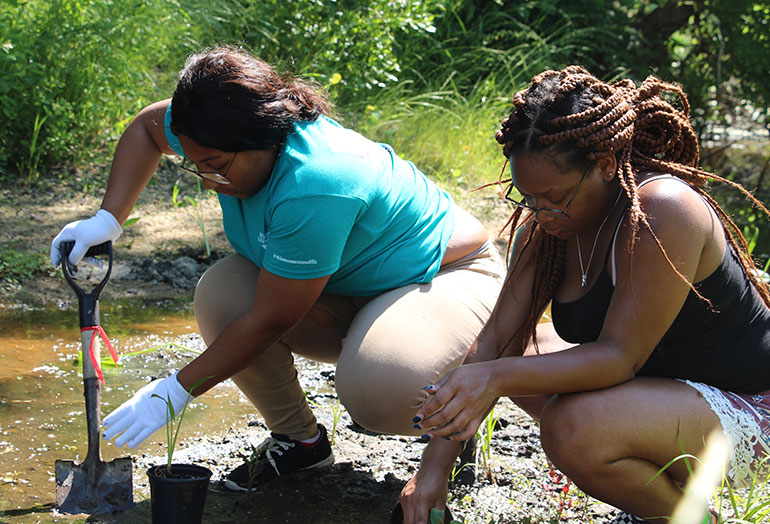
Dorchester Career and Tech Center students install herbaceous plugs along Cambridge Creek.
Over the past year, they grew native plants in their greenhouse specifically to add to the vegetation at the restoration site. Today, they put them in the ground alongside my colleagues from the Chesapeake/Delaware Bays Bioregion.
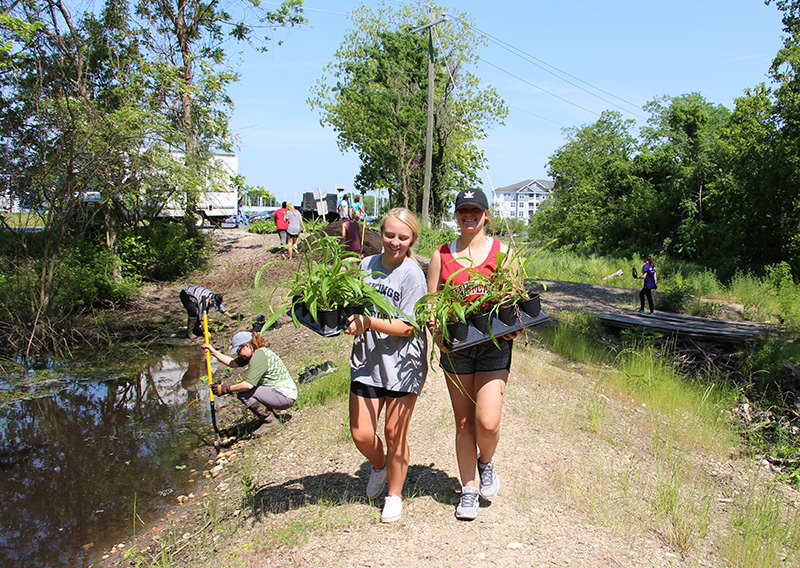
Students carry plants they’ve been growing all year to the restoration site.
After the school’s first planting effort last year, Biohabitats’ construction coordinator, Jim Favret, told me that while he was helping two students plant a tree, he learned that they were unaware that the field of ecological restoration existed. He told them all about the different disciplines involved in restoring ecosystems and answered their many questions. After hearing Jim’s descriptions, one student said she might like to pursue a career in ecology.
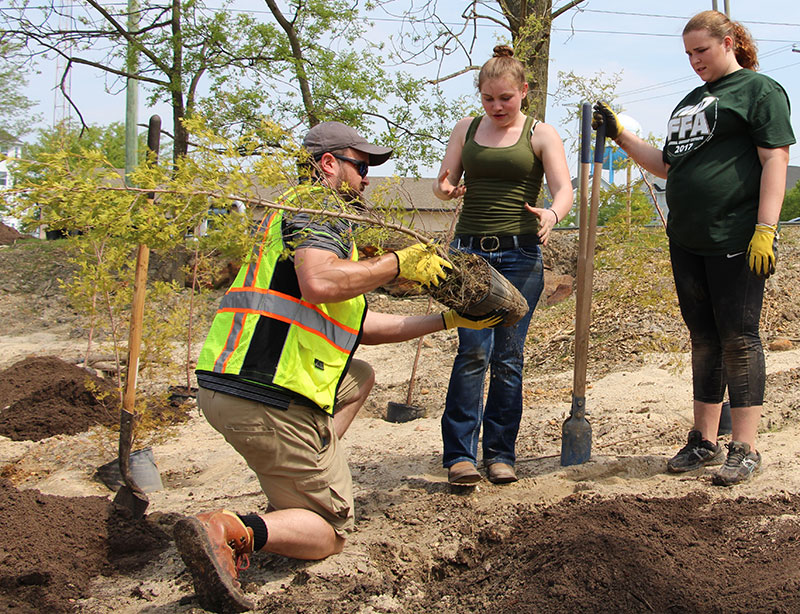
Biohabitats’ Jim Favret, planting trees and new career thoughts with students
That, my friends, is more than a ripple. That’s a wave. And it’s growing.
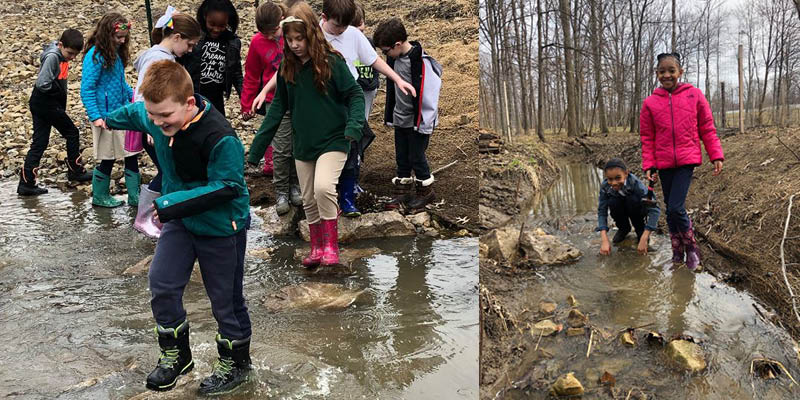
Ecological restoration provides fun and engaging ways to teach kids about the natural world
Further Reading
Meet Water Resources Engineer Kayla BrownNew Mexico Must Become a Catcher of Rain
Ripple Effects
Get to know Water Resources Engineer Jake Radeff
Meet Conservation Biologist Nolan Schillerstrom
More From This Author
The eternal ripple of a restored streamWhat does this elephant have to do with a stream restoration project in Cleveland?

